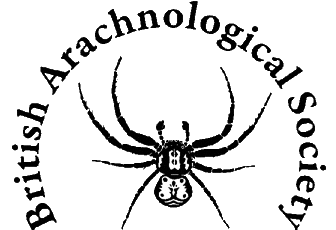Next to the mites and ticks, the spiders are the most diverse group of arachnids with over 38,000 species described. Their populations can be huge: possibly in excess of five million per hectare in temperate grassland. Consequently, they have an enormous impact on agricultural productivity, it has been suggested that the population of spiders in Britain consumes more insects each year than the weight of the population of people! They occur in virtually every terrestrial habitat and even in fresh water. Everyone knows what a spider looks like: the body is clearly divided into two parts separated by a narrow waist. Apart from one very primitive family and, unlike most other arachnids, the opisthosoma (equivalent to the abdomen in insects) is unsegmented. Their chelicerae are well developed with a large basal segment attached to which is a sharp claw. At the tip of the claw is the opening of a venom gland. The chelicerae either operate in a stabbing action, up and down (in the mygalomorph spiders, including so-called tarantulas and 'bird-eating' spiders) or, in the case of most spiders (the Araneomorpha), from side to side, towards the mid-line. Relatively few species will bite people and of those that can or do even fewer cause problems. However several species are potentially dangerous.
The pedipalps of females are unmodified and leg-like but shorter and with fewer segments than a leg. Those of males, however, are more complex and designed for transferring seminal fluid to the female. The male pedipalp of each spider species has a characteristic structure that is used in their identification. Some families of hunting spiders have particularly well developed eyes and the jumping spiders (family Salticidae) have eyes that are capable of "focusing" on objects at different distances from them. Arguably, the most significant feature of spiders and their success is their use of silk, produced by elaborate spinning organs, the spinnerets, on the posterior end of the opisthosoma. Silk is used in many ways, including the protection of eggs, as a safety line, for mating, for prey detection, for making retreats and, most obviously, to entangle and catch prey. The webs used for this latter purpose vary from simple tangles of threads to the beautifully engineered orb webs most people are familiar with.
